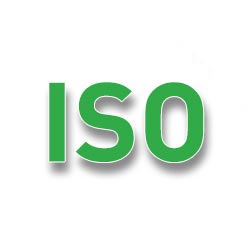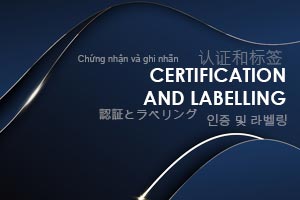Contact us ?
Your challenges
in Management System Certification
In Asia's dynamic and fast-changing business landscape, it's increasingly difficult to stand out from the competition. Obtaining an internationally recognised management system certification is a powerful tool for improving your organisation's efficiency, optimising processes, managing risks, adopting a continuous improvement approach and strengthening your organisation's credibility with the various stakeholders.
Calling on Apave, an independent third party for your certifications, will give you the international recognition you need to develop your projects and meet your customers' requirements:
- Control costs and increase productivity by avoiding non-compliance.
- Improve exchanges with the various stakeholders.
- Satisfy your customers through the transparency of your processes.
- Unite your staff by giving meaning to your actions.
Certifications issued by Apave
in Asia

ISO 9001

ISO 9001
What is ISO 9001?
ISO 9001 is an international standard outlining the requirements for a Quality Management System (QMS). It helps organizations showcase their capability to consistently deliver products and services that satisfy customer expectations and regulatory requirements while improving customer satisfaction through effective implementation of the system.
What are the levers involved?
It defines specific requirements for the quality management system, based on principles such as :
- Management involvement
- Customer orientation
- Staff involvement
- Process approach, system approach, continuous improvement, evidence-based decision making, and mutually beneficial supplier relationships.
What are the benefits of certification?
It provides proof of the organization's performance in the areas of quality, occupational health and safety and environmental management. The ISO 9001 standard offers many advantages such as :
- Increased customer confidence
- Cost reduction
- Staff involvement
- Progressive approach
- Removal of trade barriers and international recognition
What are the modalities?
The certification is valid for 3 years and to obtain the certification, it is recommended that the quality management system has been in place for at least 6 months, that it has been audited internally at least once, and that a management review has been performed.

ISO 14001

ISO 14001
What is ISO 14001?
ISO 14001 certification for Environmental Management Systems (EMS) is an internationally recognized standard outlining the requirements for developing, implementing, maintaining, and enhancing an organization’s environmental management system. To guide organizations in systematically managing their environmental responsibilities, promoting sustainability, and minimizing their environmental impact.
What are the levers involved?
The ISO 14001 standard defines specific requirements for an environmental management system (EMS) that allows an organization to:
- Determine its significant environmental impacts
- Develop an environmental policy
- Establish objectives
- Take into account regulatory requirements
- Establish processes that allow it to respect the commitments expressed in this environmental policy
- Take the necessary actions to improve its environmental performance
Like ISO 9001 and ISO 50001, it is part of the management system standards based on the principle and approach of continuous improvement (of environmental performance for ISO 14001).
What are the modalities?
The validity period of the ISO 14001 : Environmental Management System certification is 3 years, subject to the completion of annual surveillance audits.
The renewal of the certification requires a renewal audit, which is carried out by a different auditor and which aims to confirm that there is no major non-conformity.
The requirements of an EMS are divided into 18 environmental requirements and 6 chapters, including:
- General requirements
- Environmental policy
- Planning
- Implementation of actions to comply with the environmental policy
- Controls and corrective actions
- Management review
What are the benefits of certification?
The implementation of the ISO 14001:2015 standard aims to:
- Control the environmental impact of your activities
- Develop an environmental policy
- Demonstrate your involvement in the preservation and protection of the environment on a global scale.
Benefits for the ISO 14001 certified organization:
- Identification of the environmental aspects of your activities, products and services.
- Compliance with regulatory requirements.
- Transparent communication with employees, local residents, customers, environmental associations, elected officials, insurers, etc.
- Enhancement of your image
- Opening towards new markets
- The certification of your environmental management system (EMS) according to the ISO 14001 standard allows you to prove your environmental involvement on a worldwide level.

ISO 45001

ISO 45001
What is the ISO 45001?
ISO 45001 is an international standard for Occupational Health and Safety (OH&S) Management Systems. It offers a structured framework for organizations to enhance and manage their health and safety practices, with the goal of fostering safer and healthier work environments. Achieving this certification signifies an organization’s dedication to preventing work-related injuries and illnesses and ensures adherence to relevant legal and regulatory standards.What are the levers involved?
- OHS management system planning and policy
- Risk management
- Training and awareness of occupational health and safety risks and prevention and protection measures
- Management's commitment to provide the necessary resources to ensure its effectiveness.
- Continuous improvement of the OHS management system
What are the benefits of certification?
- Manage risks in a global and structured way
- Reduce the number of work accidents of your employees
- Reduce the direct and indirect costs of your organization (business interruptions, insurance premiums, etc.)
- Increase productivity and performance through better working conditions (less absences, lower staff turnover rate, etc.)
- Demonstration of your commitment to improving the health and safety of your employees.
- Improvement of your image with your partners, clients and customers.
What are the modalities?
- That your Occupational Health and Safety management system has been in place for 6 months,
- That your Occupational Health and Safety management system has also been audited internally at least once,
- That a management review has been carried out.

Group management system certification: ISO 9001, ISO 14001 & ISO 45001

Group management system certification: ISO 9001, ISO 14001 & ISO 45001
By grouping several audits together, you can save time and costs, reduce the duration of audits, and reduce the amount of disruption at your sites and time spent by your employees.

EN 1090 and EN ISO 3834

EN 1090 and EN ISO 3834

Factory Production Control (FPC) system

Factory Production Control (FPC) system
Manufacturers require a factory production control (FPC) system certified by an independent third-party certification agency that is recognized by the Building and Construction Authority (BCA) in Singapore.
Factory Production Control (FPC) is a system integrated into manufacturing processes to guarantee that the manufactured products consistently adhere to defined requirements and standards. It plays a vital role in quality management systems, ensuring the maintenance of product quality, safety, and compliance with regulatory obligations.
With an experienced team of auditors available, Apave will guide and support you to achieve a robust factory production control (FPC) system.
Discover our other certifications
Our strengths

OUR CUSTOMER RELATIONSHIP APPROACH

OUR EXPERTISE




